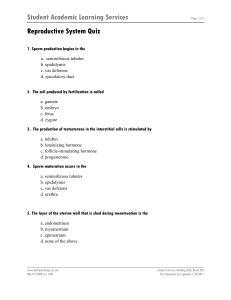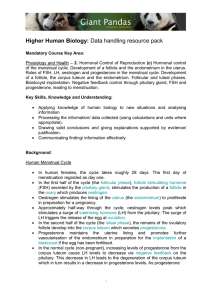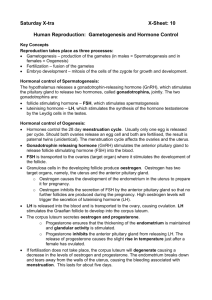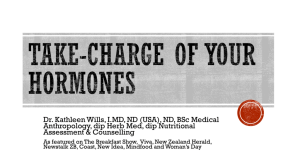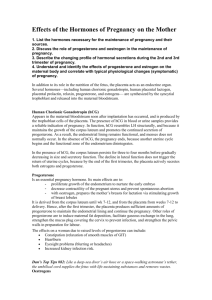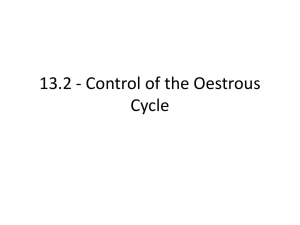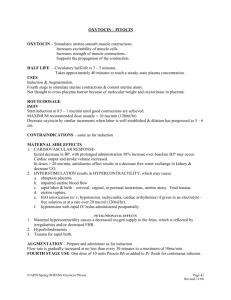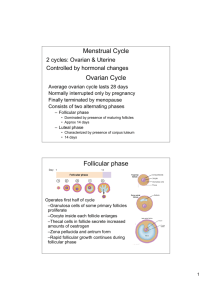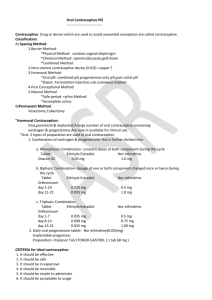Hormonal control during pregnancy
advertisement
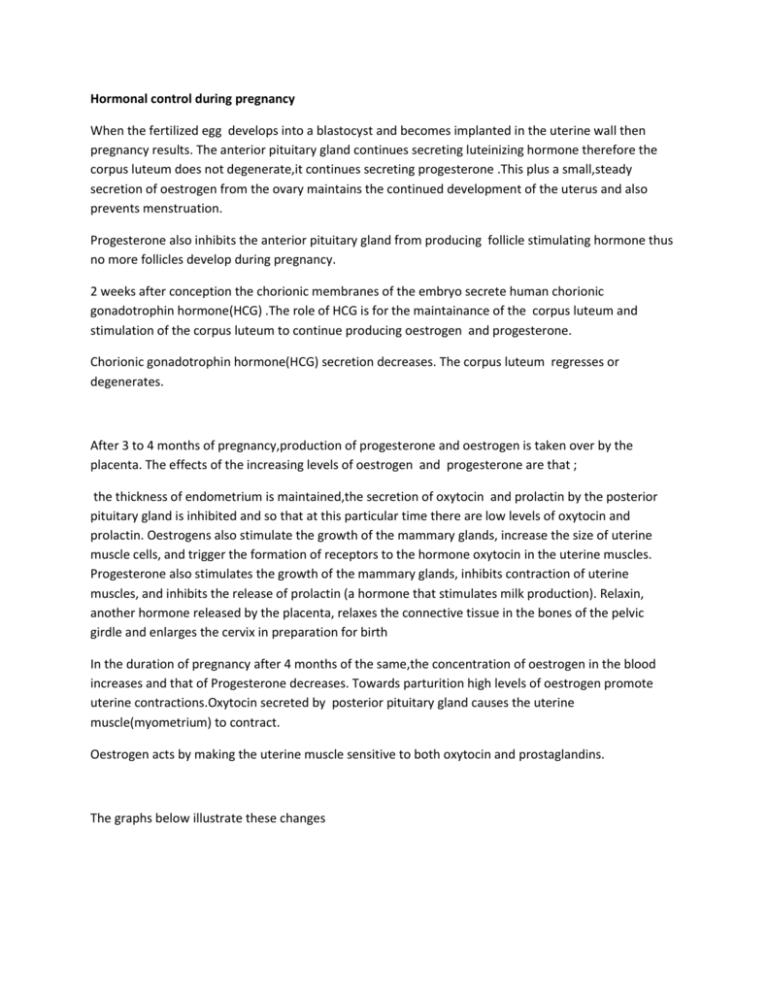
Hormonal control during pregnancy When the fertilized egg develops into a blastocyst and becomes implanted in the uterine wall then pregnancy results. The anterior pituitary gland continues secreting luteinizing hormone therefore the corpus luteum does not degenerate,it continues secreting progesterone .This plus a small,steady secretion of oestrogen from the ovary maintains the continued development of the uterus and also prevents menstruation. Progesterone also inhibits the anterior pituitary gland from producing follicle stimulating hormone thus no more follicles develop during pregnancy. 2 weeks after conception the chorionic membranes of the embryo secrete human chorionic gonadotrophin hormone(HCG) .The role of HCG is for the maintainance of the corpus luteum and stimulation of the corpus luteum to continue producing oestrogen and progesterone. Chorionic gonadotrophin hormone(HCG) secretion decreases. The corpus luteum regresses or degenerates. After 3 to 4 months of pregnancy,production of progesterone and oestrogen is taken over by the placenta. The effects of the increasing levels of oestrogen and progesterone are that ; the thickness of endometrium is maintained,the secretion of oxytocin and prolactin by the posterior pituitary gland is inhibited and so that at this particular time there are low levels of oxytocin and prolactin. Oestrogens also stimulate the growth of the mammary glands, increase the size of uterine muscle cells, and trigger the formation of receptors to the hormone oxytocin in the uterine muscles. Progesterone also stimulates the growth of the mammary glands, inhibits contraction of uterine muscles, and inhibits the release of prolactin (a hormone that stimulates milk production). Relaxin, another hormone released by the placenta, relaxes the connective tissue in the bones of the pelvic girdle and enlarges the cervix in preparation for birth In the duration of pregnancy after 4 months of the same,the concentration of oestrogen in the blood increases and that of Progesterone decreases. Towards parturition high levels of oestrogen promote uterine contractions.Oxytocin secreted by posterior pituitary gland causes the uterine muscle(myometrium) to contract. Oestrogen acts by making the uterine muscle sensitive to both oxytocin and prostaglandins. The graphs below illustrate these changes
